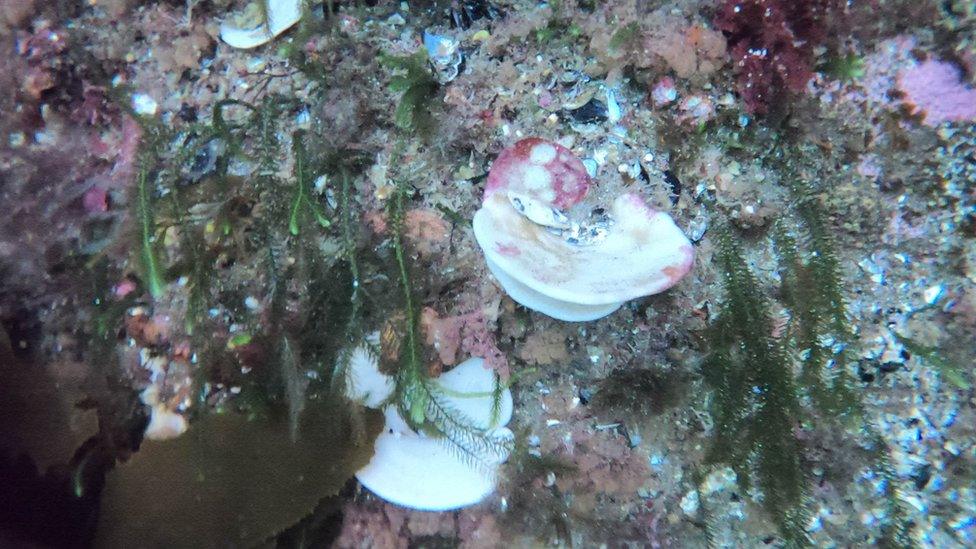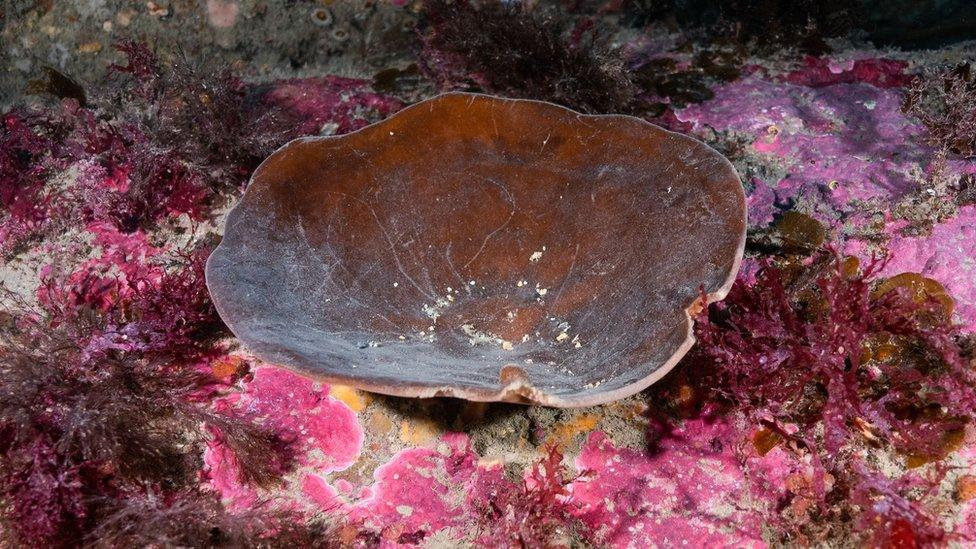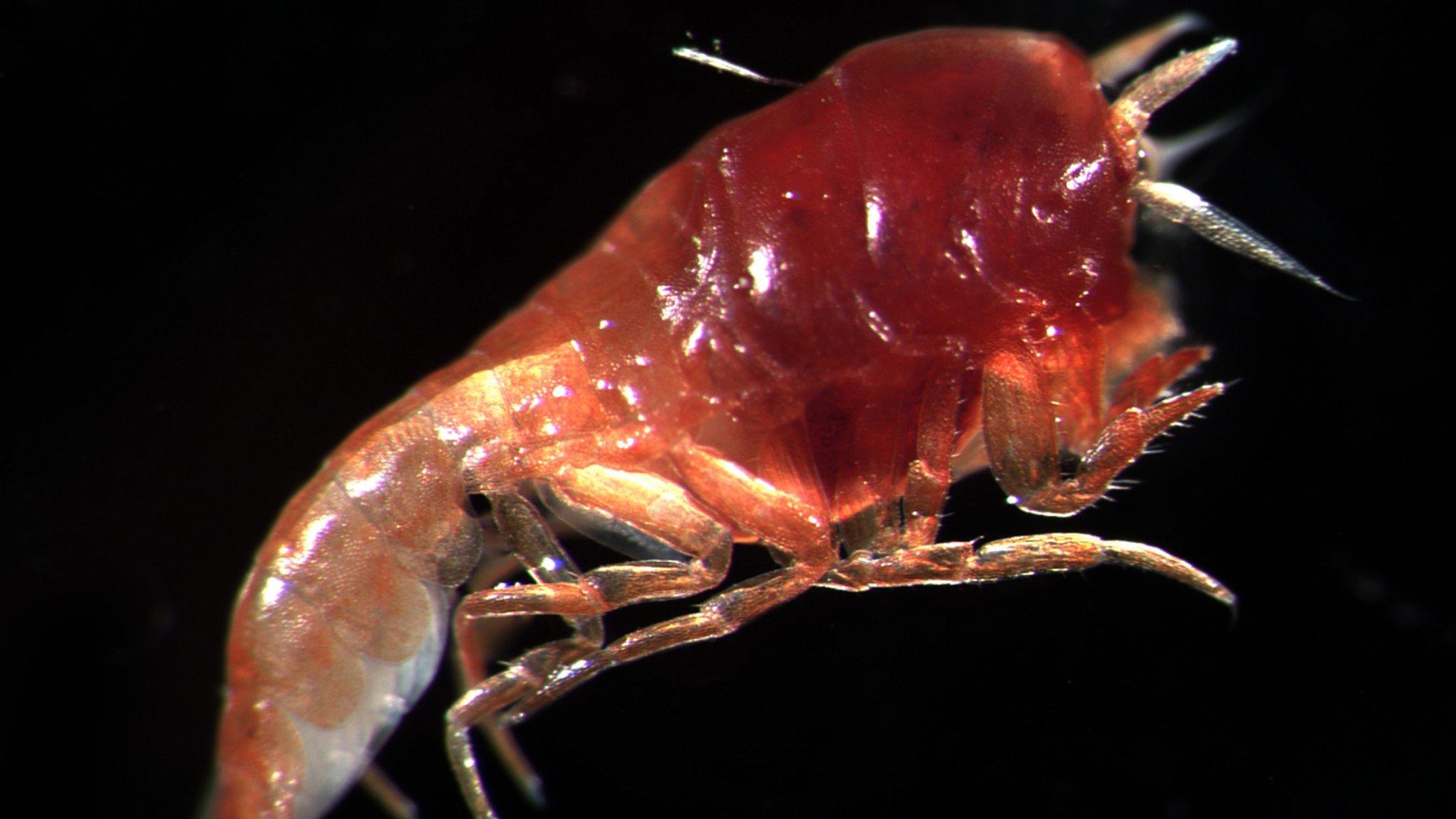Bleached sea sponges found off New Zealand for the first time
- Published
- comments

Mass bleaching of sea sponges has been discovered in New Zealand for the first time, causing concern for scientists there.
The bleached sea organisms are caused by rising sea temperatures and have an impact on marine life around them.
Researchers from Victoria University of Wellington say in some areas up to 95% of sponges were affected.
Marine biology professor James Bell discovered the sea sponges alongside his colleagues Dr Valerio Micaroni and Francesca Strano on a research trip to Fiordland in New Zealand's South island in April.
Instead of the healthy brown sponges the team found sponges which had been bleached white.
What are sea sponges?
Sponges are common animals on the seafloor around the world.
They pump water through their bodies and as this water passes through they capture the tiny plankton and bacteria living in sea water.
The waste product (essentially sponge poo) from the sponge end up on the floor of the ocean. This can be eaten by other animals.
Many also form tree-like, cup, and tube shapes making a structure that's a bit like a forest. These so called 'sponge gardens' provide a home to lots of other animals.
They are very important for plants and animals to survive.
What has happened to these sea sponges?
Scientists believe that the sea sponges have bleached because of the rising sea temperature.

A healthy sea sponge
Many sponges have tiny plants or bacteria (called symbionts), says Professor James Bell which capture sunlight through process of photosynthesis to provide food for the sponge.
The researchers say that the type of sea sponge they looked at may have pushed out these photosynthesising organisms which give the sponge its colour.
"In the case of Cymbastela we believe the seawater temperature has got too high, and sponges have expelled the symbionts, leaving the sponge skeleton showing," James Bell told Newsround.
"This is similar to the coral bleaching that has been reported in tropical waters."
Why does it matter?

A healthy sea sponge
Professor James Bell said the scientists were "really concerned" about the bleaching of the sea sponges.
The sea sponges have an important part to play in the marine ecosystem providing shelter and food for a variety of organisms like crabs, algae and fish.
Researchers say as it is the first time it has been reported in New Zealand, they don't know if the bleaching will lead to the sea sponges dying out, but if it does happen it would have a huge impact on these ecosystems.
Professor James Bell says climate change could make events like this happen more often.
"We are also worried predicted increase in sea surface temperatures in the future may make such extreme weather events more common and effect a wider range of plants and animals," he said.
- Published28 February 2019

